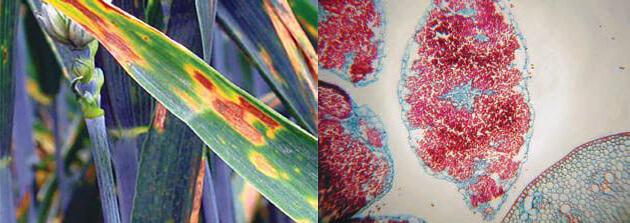Seed borne viruses and pathogens can cause devastating damages to crops, which is a big threaten to sustainability and marketability. Seed health testing, aiming for ensuring seedling establishment and minimizing pathogen transmissions, is an essential approach to prevent crop losses caused by pathogens and diseases.
 Figure 1. Infections of Ustilago nuda caused loose smut of barley leaves (left); and a microscopic view of the embryo infection (right) (Elias et al., 2012).
Figure 1. Infections of Ustilago nuda caused loose smut of barley leaves (left); and a microscopic view of the embryo infection (right) (Elias et al., 2012).
Lifeasible offers seed health testing services against viruses and pathogens. Our experienced scientists and crop specialists will not only help you with high-quality experiments with reliable results, but also offer professional consultations to help you make the best decisions for seed health of your crops. A variety of testing methods for seed health are available at our company.
With cutting edge technology and optimized testing methods, we are devoted to meeting the needs for seed health testing from all of our customers. Our experts can not only help you precisely to identify plant disease (s) and their corresponding pathogens, but also will provide you with professional advices for your decisions on the growth and marketing of your crops.
Reference
Lifeasible has established a one-stop service platform for plants. In addition to obtaining customized solutions for plant genetic engineering, customers can also conduct follow-up analysis and research on plants through our analysis platform. The analytical services we provide include but are not limited to the following:
Get Latest Lifeasible News and Updates Directly to Your Inbox
Adaptive Evolutionary Mechanism of Plants
February 28, 2025
Unraveling Cotton Development: Insights from Multi-Omics Studies
February 27, 2025